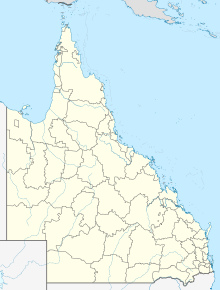아리에티스 39
39 Arietis| 관측 데이터 에폭 J2000 이쿼녹스 J2000 | |
|---|---|
| 별자리 | 양자리 |
| 우측 상승 | 02h 47m 54.54142s[1] |
| 탈위임 | +29° 14′ 49.6132″[1] |
| 겉보기 크기 (V) | 4.514[2] |
| 특성. | |
| 스펙트럼형 | K1.5 III[3] |
| U-B색지수 | +1.083[2] |
| B-V색지수 | +1.118[2] |
| R-I 색지수 | 0.58 |
| 아스트로메트리 | |
| 방사 속도 (Rv) | –15.53 ± 0.14km[4]/s |
| 고유 운동 (μ) | RA:+125.47 ± 0.25mas[1]/yr Dec.:–1905.05 ± 0.18mas[1]/yr |
| 시차 (π) | 19.01 ± 0.21[1] 마스 |
| 거리 | 172 ± 2 리 (52.6 ± 0.6 pc) |
| 세부 사항 | |
| 미사 | 1.6[5] M☉ |
| 반지름 | 11.1 ± 0.8[3] R☉ |
| 루미도 | 56[4] L☉ |
| 표면 중력 (log g) | 2.7[4] cgs |
| 온도 | 4,603[4] K |
| 금속성 [Fe/H] | –0.02[4] 덱스 |
| 회전 속도 (v sin i) | 4.5km[4]/s |
| 기타 지정 | |
| 데이터베이스 참조 | |
| 심바드 | 자료 |
39 아리에티스(약칭 39 아리)는 공식적으로 릴리 보레아 /ˈlɪiaɪ ˈbɔriə/[7]라고 이름 붙여진 별로서, 아리스의 북쪽 별자리에 있는 별이다. 육안으로 볼 수 있는 시각적 크기는 +4.5이다.[2] 연간 시차 변화 19.01 mas에서 측정한 항성까지의 거리는 약 172광년(53파섹)이다.[1]
명명법
39 아리에티스는 이 별의 Flamsteed 명칭이다.
이 별은 1757년 니콜라스 루이스 데 라카유에 의해 릴리 보레아(Lilii Borea)로 묘사되었는데,[8][9] 지금은 사라진 릴리움 별자리의 별자리로 묘사되었다. 그 단어들은 라틴어 구절인 L lilliī Borea 'Lilium의 북쪽에 있는' 것이다. Lliliī Austrīna /ɔˈstraɪnə/ '릴륨의 남쪽'은 41 Arietis였다.
국제천문연맹은 2016년 별 이름 워킹그룹(WGSN)[10]을 구성해 별의 적절한 이름을 분류하고 표준화했다. WGSN은 2017년 9월 5일 이 별의 이름을 Lilii Borea로 승인했으며, 현재는 IAU가 승인한 별명 목록에 포함되어 있다.[7]
중국어로 위(Wei Su)는 위(Wei Su)라는 뜻으로 아리에티스 39명, 아리에티스 35명, 아리에티스 41명으로 구성된 별칭을 말한다.[11] 따라서 39 아리에티스의 중국식 이름 자체가 宿宿(Wie Su er, 영어: 제2의 별)이다.[12]
특성.
39 아리에티스(Arietis)는 K1.5 III의 별 분류를 가진 거성이다.[3] 그것은 현재 붉은 덩어리로 알려진 진화 단계에 있으며, 중심부에 있는 헬륨의 융합을 통해 에너지를 발생시키고 있음을 나타낸다.[5] 태양의 1.6배의[5] 질량을 가지고 있지만, 그것의 바깥쪽 봉투는 태양 반지름의 약 11배까지[3] 확장되었다. 태양의 56배 광도로 빛난다.[4] 이 에너지는 유효온도 4,603K의 외부 대기에서 우주로 방사되어 K형 별의 시원한 오렌지색 빛을 내고 있다.[4][13]
참고 항목
참조
- ^ a b c d e f van Leeuwen, F. (November 2007), "Validation of the new Hipparcos reduction", Astronomy and Astrophysics, 474 (2): 653–664, arXiv:0708.1752, Bibcode:2007A&A...474..653V, doi:10.1051/0004-6361:20078357, S2CID 18759600.
- ^ a b c d Oja, T. (1986), "UBV photometry of stars whose positions are accurately known. III", Astronomy and Astrophysics Supplement Series, 65 (2): 405–4, Bibcode:1986A&AS...65..405O.
- ^ a b c d Nordgren, Tyler E.; et al. (December 1999), "Stellar Angular Diameters of Late-Type Giants and Supergiants Measured with the Navy Prototype Optical Interferometer", The Astronomical Journal, 118 (6): 3032–3038, Bibcode:1999AJ....118.3032N, doi:10.1086/301114
- ^ a b c d e f g h Massarotti, Alessandro; et al. (January 2008), "Rotational and Radial Velocities for a Sample of 761 HIPPARCOS Giants and the Role of Binarity", The Astronomical Journal, 135 (1): 209–231, Bibcode:2008AJ....135..209M, doi:10.1088/0004-6256/135/1/209.
- ^ a b c Tautvaišienė, G.; et al. (December 2010), "C, N and O abundances in red clump stars of the Milky Way", Monthly Notices of the Royal Astronomical Society, 409 (3): 1213–1219, arXiv:1007.4064, Bibcode:2010MNRAS.409.1213T, doi:10.1111/j.1365-2966.2010.17381.x, S2CID 119182458.
- ^ "* 39 Ari". SIMBAD. Centre de données astronomiques de Strasbourg. Retrieved 2012-07-18.
- ^ a b "Naming Stars". IAU.org. Retrieved 16 December 2017.
- ^ de Lacaille, Nicolas-Louis (1757). Astronomiae fundamenta novissimis solis et stellarum observationibus stabilita, Lutetiae in Collegio mazarineo et in Africa ad caput Bonae Spei peractis a Nicolao Ludovico de La Caille. J.-J.-St. Collombat. pp. 227, 233.
- ^ Bailey, Francis (1833). La Caille's Catalogue of 398 principal Stars, Memoirs of the Royal Astronomical Society, Vol 5. Priestley and Weale. pp. 110, 121.
- ^ "IAU Working Group on Star Names (WGSN)". Retrieved 22 May 2016.
- ^ (in Chinese) 中國星座神話, written by 陳久金. Published by 台灣書房出版有限公司, 2005, ISBN 978-986-7332-25-7.
- ^ (중국어로) 白羊座
- ^ "The Colour of Stars", Australia Telescope, Outreach and Education, Commonwealth Scientific and Industrial Research Organisation, December 21, 2004, archived from the original on February 22, 2012, retrieved 2012-01-16



